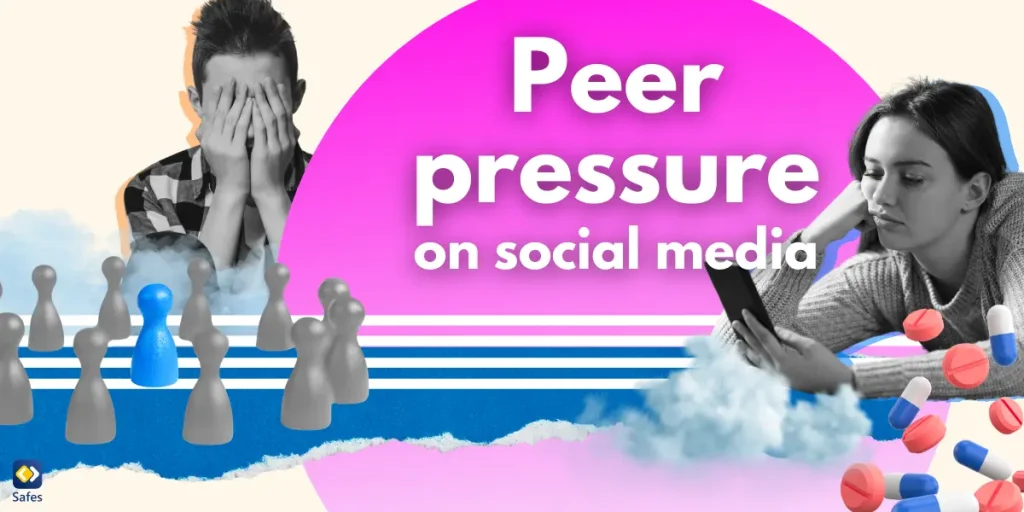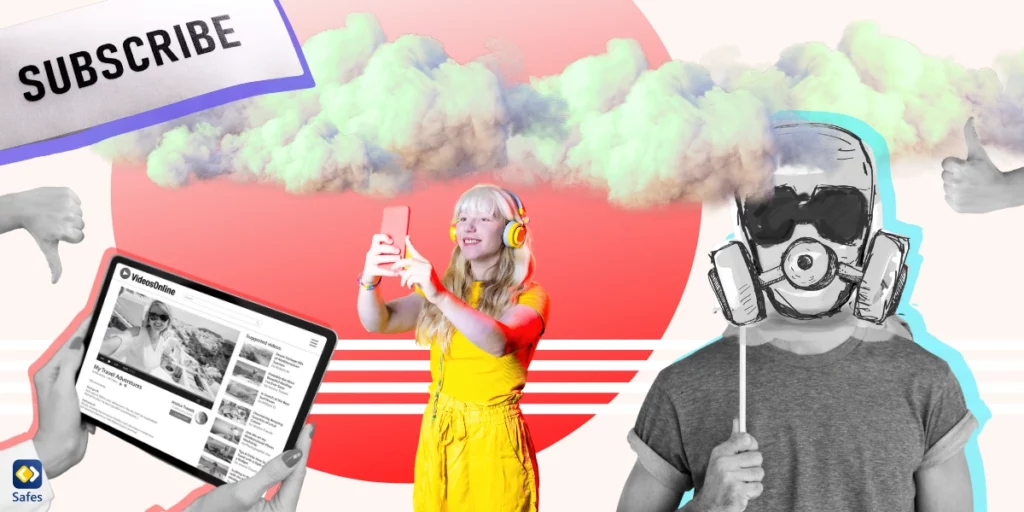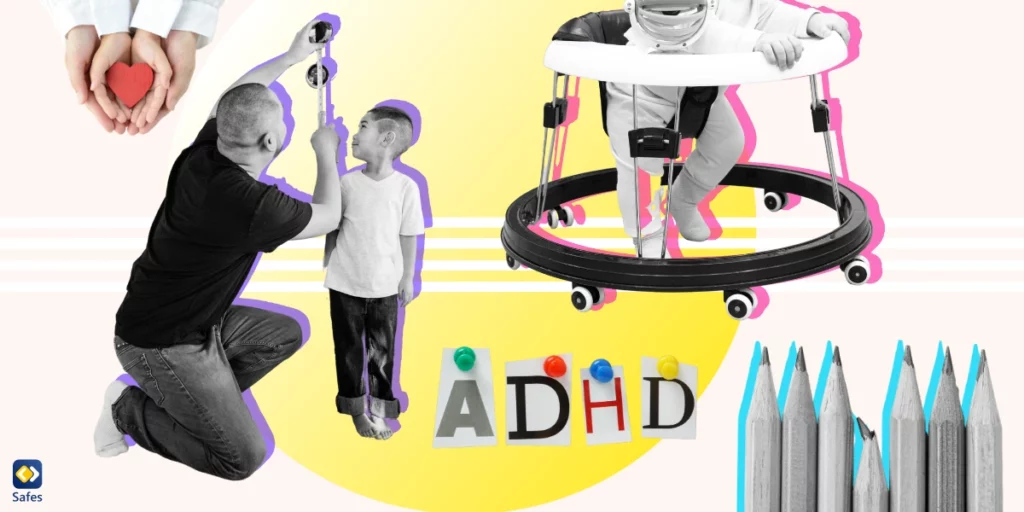It goes without saying that social media nowadays is a big part of our children’s lives. It allows them to connect with friends, share their experiences, and express themselves. However, it also has challenges, such as peer pressure. Peer pressure on social media can make children feel like they need to act or look a certain way to fit in with their friends. This can affect their self-esteem and decision-making. As parents, it’s important to understand these pressures and learn how to support our children.
Download and Start Your Free Trial of the Safes Parental Control App
But how does social media pressure on youth work and what we can do to stop it? In this blog, we will explore ways that children feel pressured to do things on social media and how to help them understand and deal with this challenge.
What Are the Examples of Peer Pressure on Social Media?
Peer pressure on social media can take many forms, often influencing children and teens in subtle and direct ways. Here are some examples.
Conformity in Appearance
On social media, many kids think they have to look a certain way to fit in. They might see their friends wearing specific clothes or using makeup, and they want to do the same to be accepted. Additionally, there is a lot of pressure to use apps that edit photos so they can look “perfect”. This can affect their self-esteem and make them worry about how they look.
Popularity and Social Status
Our children, especially teens often feel pressure to be popular online by getting lots of likes, comments, and followers. This leads to posting things that they think will get attention, even if it isn’t appropriate or something they really care about. Sometimes, they feel like they have to join in on viral challenges that everyone else is doing just to be noticed or liked by others.
Behavior and Lifestyle
On social media, certain behaviors or lifestyles are considered cool or accepted. Our kids may feel pressure to follow these patterns, like trying alcohol or smoking, because they see others doing it online. Also, when they see their friends posting about fun activities or parties, they may think they are missing out and should join in, even if they don’t really want to. This is called FOMO or fear of missing out, which makes people anxious that they are not part of exciting or important experiences that others are having.
Cyberbullying and Harassment
Unfortunately, social media can also be a place where bullying happens. Young people may join in with others who are making fun of someone online just to fit in. They might also feel pressure to comment on negative things about others to stay in the group’s favor, even if they don’t agree with it. Moreover, they’re likely to be a victim of cyberbullying themselves and suffer from its negative impacts.
Consumerism
Social media is full of influencers and ads promoting different brands and products. Seeing all these trends, our kids may feel forced to buy certain clothes, gadgets, or products only to follow their friends or favorite influencers’ lifestyles. They might believe that having these things will help them fit in or be accepted by their peers.

What Are the Negative Effects of Social Media on Peer Pressure?
Social media can affect teenagers’s decisions in their lives, which may lead to severe consequences. Peer pressure can even worsen social media negative effects on physical health and lifestyles. Learning these effects helps parents detect the signs in their children and make an informed decision about their social media usage and controlling peer pressure. Here are some possible negative effects.
- Social media can create a constant need to stay connected and updated, leading to anxiety and stress about missing out on what others are doing.
- When seeing idealized images of peers, children tend to compare themselves to others on social media which leads to low self-worth.
- Feeling excluded from events or activities shared on social media can make children feel lonely and isolated.
- Negative interactions, such as cyberbullying or receiving hurtful comments bring feelings of depression.
- Peer pressure on social media can encourage risky behaviors, such as experimenting with drugs, and alcohol, or doing dangerous challenges to get attention.
- Spending a long time on social media can distract from schoolwork and negatively affect academic performance.
How to Overcome Peer Pressure on Social Media?
When you realize your child is dealing with peer pressure and does things that are either risky or not what they’re really into or care about, it’s time to help them. You can start by limiting screen time and promoting screen-free periods. Also, teach them how to think critically to question trends and understand that not everything online is real or relevant.
Based on the peer pressure on social media statistics and facts in an article about peer pressure and adolescent mobile social media addiction, there’s another helpful way: Building self-confidence by focusing on personal strengths can help reduce the urge to compare themselves with others. For that, you can create a safe place for open conversations with them, and discussing online content and experiences. Another important point is encouraging diverse friendships and supporting assertiveness. This helps children express their own values and opinions.

Final Word
The world of social media brings many challenges to children and teens as they face the pressures of fitting in and keeping up with their peers. Parents should have conversations and offer guidance on responsible social media use to empower kids to make wise decisions and stay true to themselves. Safes, our parental control app, is designed to support families in this journey by providing tools to manage screen time, monitor online activities, and ensure a safe digital environment. If you have used Macbook parental controls or the same features on other devices, you’ll have a more fulfilling experience with Safes, as it offers unlimited features you need to help your child deal with peer pressure.
Download the Safes app today on Android and iOS to take advantage of our free trial and discover how it can help you create a safe and supportive digital space for your family.
Your Child’s Online Safety Starts Here
Every parent today needs a solution to manage screen time and keep their child safe online.
Without the right tools, digital risks and excessive screen time can impact children's well-being. Safes helps parents set healthy boundaries, monitor activity, and protect kids from online dangers—all with an easy-to-use app.
Take control of your child’s digital world. Learn more about Safes or download the app to start your free trial today!




